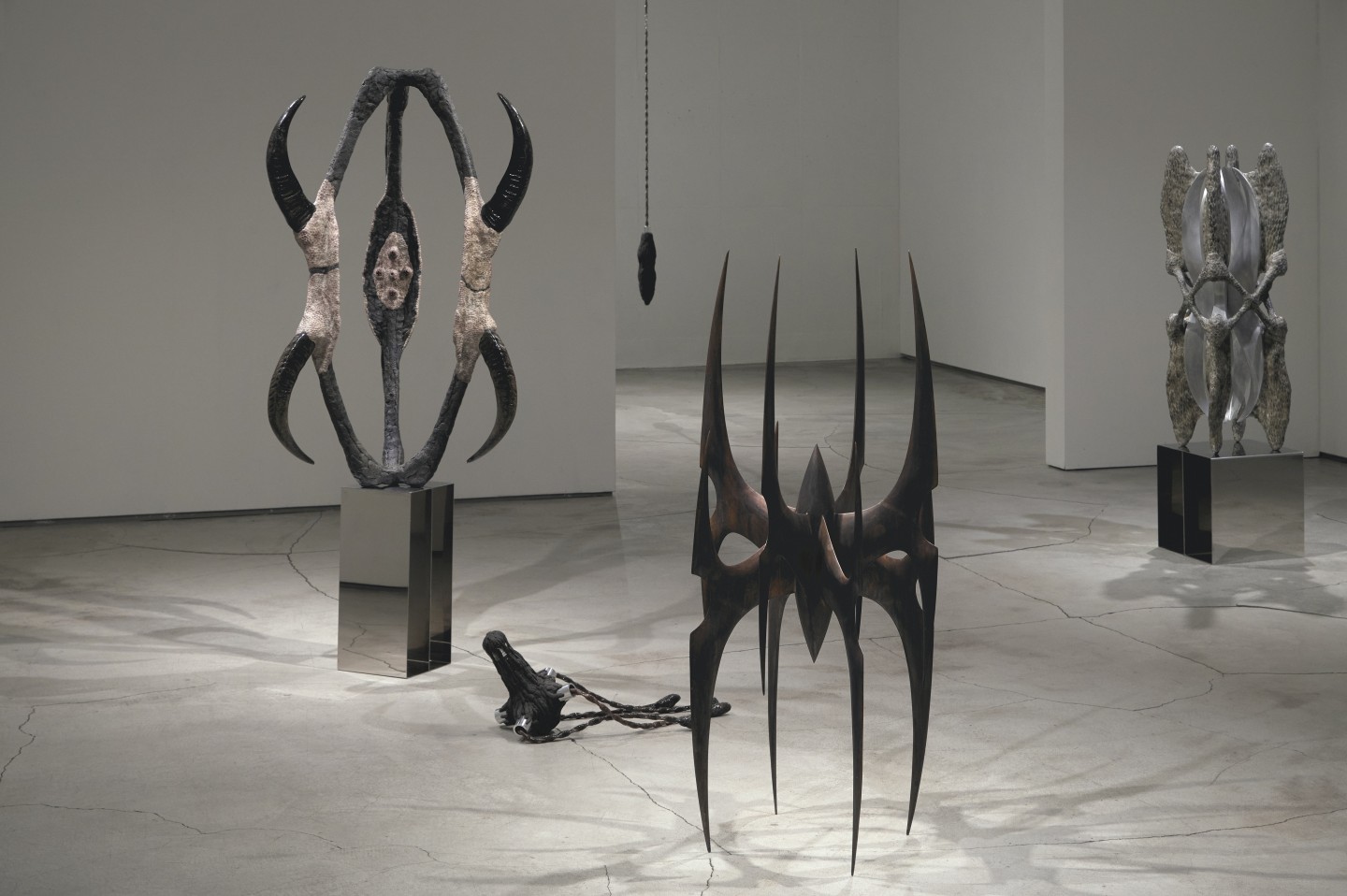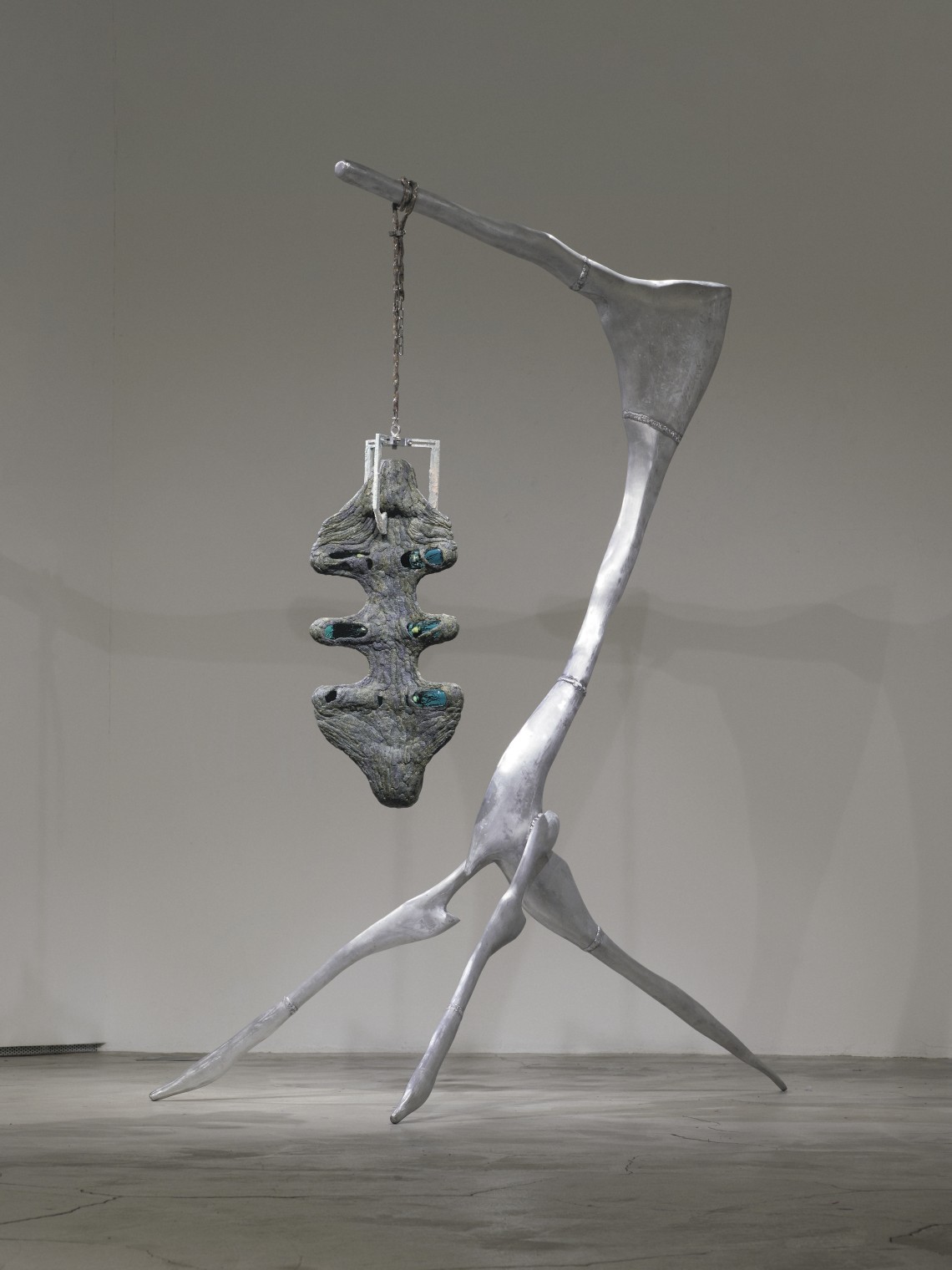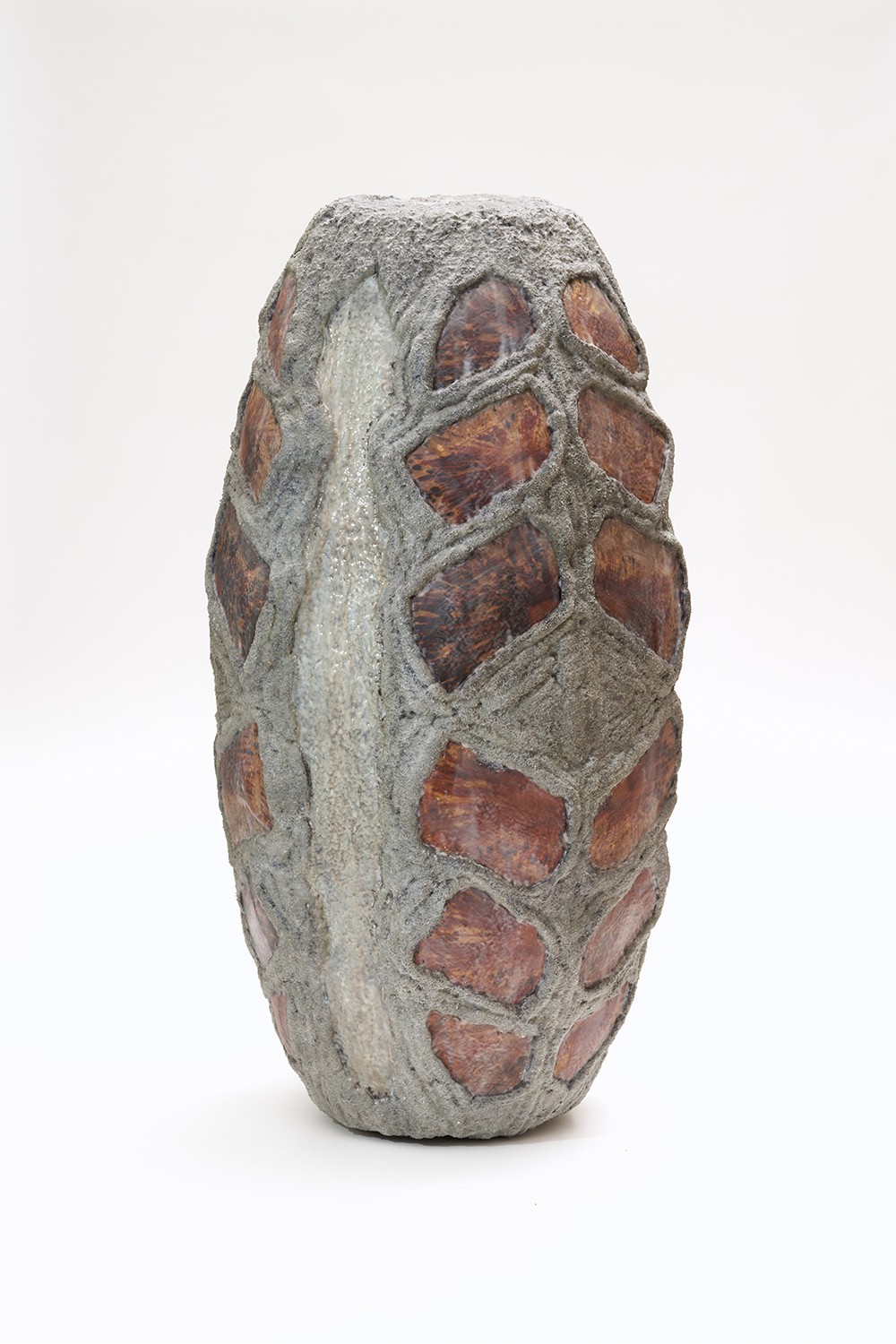Lee Hyunwoo
Jun. 7 - 28, 2023


As I was writing the preface to this exhibition, I thought back to the first time I met the artist. He had a harsh-looking buzz cut, a slick nose piercing about the width of a smoothie straw, and was wearing a pair of shorts with a pattern of cute dragon characters that looked like something straight out of an animated children’s show. We spoke for quite a while, but during our long conversation his expression and posture remained unchanged no matter what I did, but he would occasionally laugh quietly, his smile a deep curve on his face, or reach for the heavens to stretch out his limbs. In other words, he was very true to being himself. Even now, seeing that nothing has changed since then, it is clear that he has never harbored any pretense or crafted a narrative for our relationship, from our very first encounter until now.
An honest life, I imagine he is living such a life. Honesty in the sense of being upright and righteous, and without falsehood or fabrication in the heart, typically means the unity of front and back, outside and inside, which is oftentimes moving, evoking the feeling of ‘gam-dong (感動, movement of the heart).’ The word ‘gam-dong’ unites the seemingly opposite concepts of mental emotion (gam) and physical movement (dong). The movement of emotions from one extreme opposite to the other, from negative to positive and vice versa, and the ambivalence of the combination of the two words can be seen as the premise of profound transformation. This type of transformation, which can only be encountered by pushing oneself to the most unfamiliar extremes of physical and psychological energy, is a movement that leaps across the vast spectrum of space and time in a single step. Thus, transformation goes beyond meaning and becomes language itself, the simplest and most densely condensed image. It is perhaps because of the resemblance to such a process that people are moved (feel gam-dong) by nature. We may not fully perceive all of nature's journeys and cause-and-effect relationships, the narrative of birth and growth, aging and death, and all of its trials and tribulations, both microscopic and macroscopic, repeated countless times, yet we understand it on an instinctual level. Nature as we see it today does not explicitly explain it, but it does not hide it either. We encounter a sublime overturning of emotions—a profound transformation—when nature appears as a mass of time, sincere in the present, without any exaggeration, overwhelming the understanding and explanation of any particular point of view.
In the past, the artist has refrained from explaining the context behind his work, in the hopes that they would be accepted as nature itself. However, in this exhibition, all the artworks, as can be seen through the exhibition title 'parenthesis,' both clearly elaborate on but also omit the most personal and visible processes of metamorphosis, such as insects hatching from eggs, chrysalis, and molting, by emphasizing the key moments of transformation. In addition, the artist focuses on the clusters, or the colony, a group of opposites that are unable to survive as individuals. The patterns and movements created by the perfect match between the goals of each individual and the goals of the colony are very moving. A colony of insects with these same internal and external orientations is often perceived by us as a single mass rather than a collection of many smaller individuals. This cluster, which can be seen as something based more on instinct than logical thinking circuits, contains various relationships such as symbiosis and parasitism, where only images remain rather than meaning. These relationships exist not only between the pieces presented in this exhibition but also between the artwork and the viewer, as well as between the artworks themselves. The taxidermy Lee has often incorporated into his sculptures which is used to preserve dead animals and plants from decaying, the parts of their bodies that have been discarded from them, and the minerals and rocks, small chunks of flesh from the earth that are used as references and materials for the finishing on the surface of each of his pieces are all organisms that have gone through life and death and are separated from narrative and space and time, erasing the relationship of the tangled food chain and cluster. They illuminate the very form of these elements while leading to another metamorphosis and transformation. If we were to look past the functions of the symbol ‘()’, of the compression of explanation and the supplementation of content, and regard only the shape of the two curved brackets relying on the other, we might discover that it is reminiscent of a chrysalis, which holds the power of potential transformation. Considering that this is the attitude the artist takes when creating his work, and the way he views all subjects that have been created through artificial processes, his current works are a cluster of transformation, where the outside and the inside, which have never before touched, flip all sides to meet each other, and the emotion travels at high speed across the farthest distance to the other side that it can reach.
The sculptures of the artist, now in front of you, seek to meet you honestly. Honesty is not a synonym for goodness, nor is it always accompanied by sparkling beauty. It is like a shaved head, prickly, and cute, like a dragon character, and it pierces the flesh like a smooth piercing. This is the moment of honesty and transformation. If you don't hold back and move forward boldly, you may be able to feel the fleeting movement of the moment of transformation.
Jungmin Cho
전시의 서문을 쓰며 작가와의 첫 만남을 떠올려보았다. 그는 거친 반삭의 헤어에 어린이 애니메 이션에 등장할 법한 귀여운 용 캐릭터 패턴의 반바지를 입고 있었고 코에는 스무디 빨대 굵기 만한 미끈한 피어싱을 하고 있었다. 꽤나 긴 시간 얘기를 나누는 동안 내가 뭘 하든 표정과 자 세에 별다른 미동이 없던 그는 간간히 얼굴에 진한 곡선을 만들며 조용히 웃거나 온 몸을 시원 하게 뻗으며 기지개를 켰다. 그러니까 그는 자신으로 존재하는 것에 정말 충실했다. 지금도, 그 때와 변함없는 것을 보면 그는 첫 만남부터 지금까지 어떠한 가식도, 관계의 서사도 염두한 적 이 없음이 분명하다.
정직한 삶, 나는 그가 그런 삶을 살고 있다고 생각했다. 마음에 거짓과 꾸밈이 없이 바르고 곧다 는 의미의 정직함은 곧 앞과 뒤, 밖과 겉의 일치이며 이는 대게 감동(感)을 유발한다. 감동이 란 단어에는 정신적인 감정과 물리적인 움직임이라는 서로 상반된 성질을 띠는 개념이 하나로 묶여있다. 부정에서 긍정으로든, 혹은 그 반대이든, 극에서 극으로의 감정의 이동과 단어 조합의 양가성은 곧 전복을 전제한다고 볼 수 있다. 물리적, 심리적 에너지를 최고치로 끌어내어 스스로 를 가장 낯선 극단으로 밀어붙여야만 맞이할 수 있는 전복은 장대한 시공간의 스펙트럼을 한 걸 음으로 뛰어넘는 움직임이다. 때문에 전복은 의미를 넘어 가장 단순하지만 동시에 고밀도의 응축 된 이미지, 언어 그 자체가 되어버린다. 자연으로부터 사람들이 감동을 느끼는 것은 그러한 프로 세스를 닮은 이유일 것이다. 미시적이고 거대하게 수없이 반복되는 탄생과 성장, 노화와 죽음 그 리고 그 속 갖은 시련과 고난의 서사에 대한 자연의 모든 여정과 인과관계를 명확히 알지는 못 하나 직감적으로 안다. 현 시점에서 우리가 보는 자연은 이를 노골적으로 설명하지 않지만 그렇 다고 숨기지도 않는다. 특정한 관점의 이해와 설명을 압도하며 어떠한 과장도 없이 현재에 성실 한 시간의 덩어리로 나타나는 자연에 우리는 숭고한 감정의 전복을 느낀다.
이처럼 그간 작가는 작업이 그 자체로 온전한 자연으로 여겨지길 바라며 주제와 설명을 삼가왔 다. 하지만 이번 전시에서는 모든 작업이 전시명, "parenthesis, 괄호"로써 사뭇 분명하게 곤충 의 알에서의 부화, 번데기, 탈피 등 가장 개인적이며 가시적 변태의 과정을 비약 아닌 비약, 전 복의 순간이란 세부 키워드를 부연하는 동시에 생략한다. 더불어 작가는 개별적 개체로 살아남기 힘든 그들이 생존전략으로 삼는 상반된 집단인 군집에 집중한다. 이 때 각 개체의 목표와 군집 의 목표가 완벽히 일치하여 만들어내는 하나의 패턴과 움직임은 그야말로 감동적이다. 이러한 내, 외부의 지향점이 동일한 곤충의 군집을 우리는 수많은 작은 개체들의 모임보다는 대게 하나 의 덩어리로 인식한다. 이는 논리적 사고 회로보다는 본능에 가까운 직관으로 인지되며 의미보다 이미지만이 남는 군집에 내재한 공생과 기생 등의 다양한 이해관계는 그가 이번 전시에서 설정 하는 작품과 좌대, 작품과 작품 간의 관계이기도 하다. 이전부터 작가가 조각에 활용해온 죽은 동식물을 썩지 않도록 보존한 박제, 그들에게서 버려진 몸체의 일부, 표면 처리의 레퍼런스 및 재료로도 사용되는 땅의 작은 살덩이인 광물과 암석 또한 모두 삶과 죽음을 거쳐 서사, 그리고 시공간으로부터 분리된 유기체의 것으로 얽히고설킨 먹이사슬과 군집의 관계도를 지우고 그들의 형태 자체를 조명하며 또 다른 변태이자 전복을 이끈다. '()'도 양쪽 각각의 괄호를 서로에게 의 지하며 형성하는 설명의 압축과 내용 보조의 기능보다 형태로 인식해보면 잠재적 전복의 힘을 지닌 번데기를 연상시킨다. 이것이 작가가 창작을 할 때 취하는 태도이자, 인공적 과정을 거쳐 만들어진 모든 피사체들을 바라보는 시선임을 고려해볼 때, 그의 이번 작업들은 한 번도 닿지 못한 겉과 속이 온 면(面)을 뒤집어 만나고 감정이 도달할 수 있는 반대편의 가장 먼 거리를 초 고속으로 주파하는 전복의 군집이다.
지금 당신 앞의 작가의 조각은 당신과 정직하게 만나고자 한다. 정직함은 선함의 동의어가 아니 며 항상 반짝이는 아름다움을 동반하지 않는다. 반삭의 머리처럼 까슬거리고 용 캐릭터처럼 깜찍 하나 살을 꿰뚫는 미끈한 피어싱같은 것이 정직함이자 변태의 순간이다. 경계하지 말고 성큼 다 가간다면 느껴지는 찰나의 움직임이 있을 것이다.
조정민







